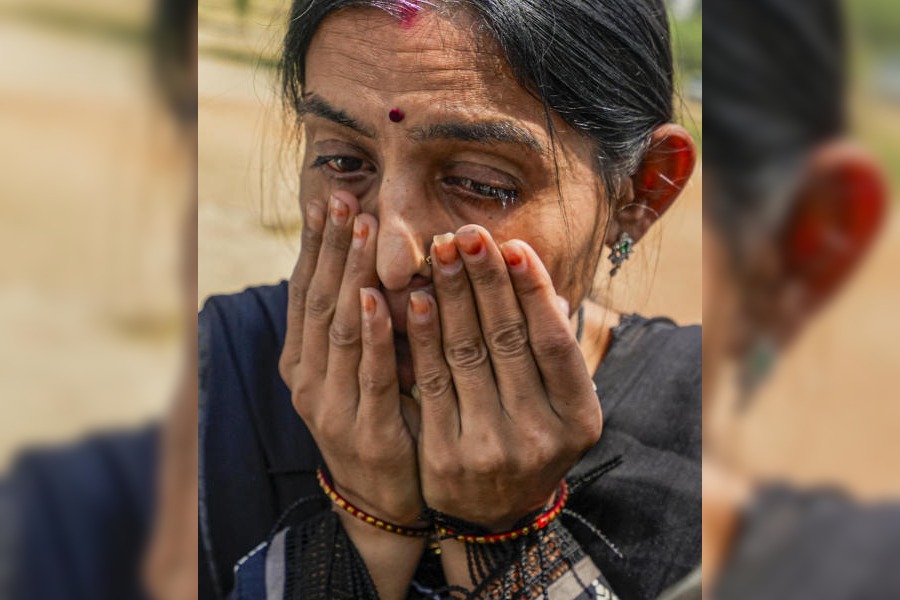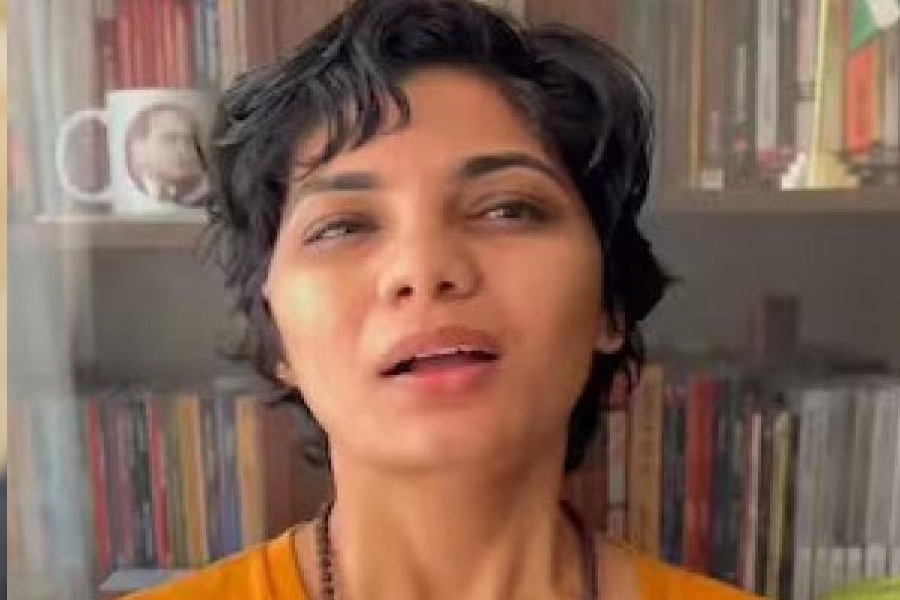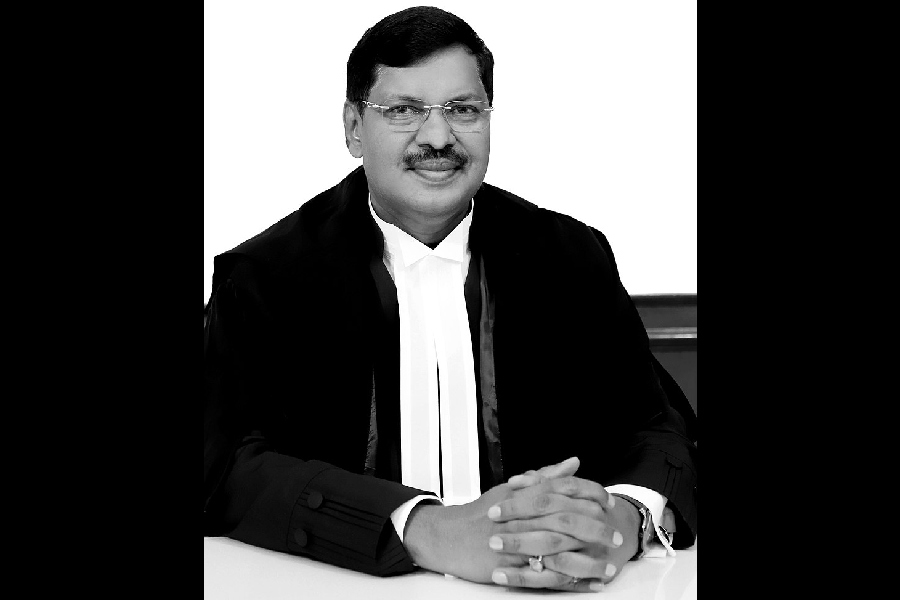 |
| WOMEN ON TOP: (Above) Aaj Tak’s (L to R) Ritul Joshi, Sonia Singh and Poonam Sharma and (below) NDTV’s Barkha Dutt |
 |
Will you wake up at the unearthly hour of 4 every morning, wash and blow-dry your hair, be in the studio at 6 to be made up in time for the Breakfast Show? “Yes, we will!” says a chorus of adrenalin junkies, for whom nothing — but nothing — is quite like the fix of being in front of the cameras.
Can you report from a bunker, under fire from a barrage of Pakistani shells, as Barkha Dutt did during the Kargil war? Can you jump on a food trolley to try and get on to Jaswant Singh’s plane taking militants to be exchanged for the hostages of Flight 814 (she clambered aboard the plane, but he refused to take her)? “Yes we can!” say the serious Dutt wannabes.
The consciously de-glamourised but most successful anchor editor today, Barkha Dutt, may bemoan what she dubs “the bimbettification of TV,” the propensity to create an airbrushed, over-glammed group of girls with more allure than acumen. But the fact is that both ends of the spectrum — bimbette and boho — represent different methods of achieving the same goal: it’s the fame, stupid!
Female resource meets the broadcast bulge. In the small but buoyant universe of television news, it’s the women news anchors who are the most luminous. In drawing room debate, the cut and jib of CNN IBN anchor Suhasini Haider’s trademark Nehru jackets, the fact that Barkha wore a hot pink silk kurta on We The People or even the effect of Sagarika Ghose’s (part of senior management at CNN IBN) somewhat school-marmy cutting off of politicians in mid-flow is the subject of more animated argument than any cogent analyses these admittedly intelligent women impart.
Why has the glamour quotient escalated? Because of shorter attention spans, and increased competition. With 40-odd news channels, bulletins are shorter, followed by a talk show with three or four polarised opinions and an anchor who can moderate — or even better, aggravate — the punters to take sound bites out of each other. “News is no longer about hard stuff; it’s become infotainment,” says Shireen, who doesn’t use her surname and anchors for News X, the news channel to be launched by INX Media. She has seen it all in over a decade in English and Hindi news channels.
Haider worked as a war reporter for CNN for years before shrapnel injury in a bomb blast in Kashmir forced a rethink (she had a year-old daughter then). She joined CNN IBN as its 9 pm prime time anchor. She stresses the importance of continuing to report, but agrees that coming on TV “is a privilege.”
Look at some of the other rewards. When producers want to lend verisimilitude and context to their films, they choose to anchor them in television reality. In Chak De! India, Rang De Basanti and Corporate, women news anchors (Sweta Singh of News 24, the recently launched Hindi channel, Nagma Sahar of NDTV India, Sikta Dev, also of NDTV India) had cameos, to link the filmi events to news.
Even their lives can be the stuff of celluloid: Preity Zinta’s role as Romilla Dutta in Lakshya was a straight take off on the life and times of Barkha Dutt, complete with short hair, de-glammed look, jholawala style — and, naturally, reporting from the front during the Kargil war.
If Lakshya added lustre to Barkha’s iconic image, the Padma Shri she received in the 2008 Republic Day Honours List didn’t detract from it either. And so the hordes at the gates of news channels continue to multiply. Shireen, who also runs a media school in Chandigarh, says that earlier, parents asked if their daughter would face sexual harassment at work. Now, they ask when their child will be able to read the news on TV. And Sagarika agrees there are more applicants but that they are more “concerned about their pay packages and not so much about the vocation of journalism”.
For most aspirants, TV time is not the ultimate goal — it’s often the only goal. NDTV’s Sikta Dev explains that there was a time when you could never hit prime time unless you had done TV reporting. Today, channels “simply hire newcomers as anchors straightaway.” Broadcasting veteran Alka Saxena, a consultant with Zee News, says that women “often don’t want to go into the field and do hard stories.”
The backroom boys — and girls — who plan the image projected by the on-air talent are the fashion stylists and make-up artists. At CNN IBN, it’s Sanjay Roy Chowdhury and Priyanka Singh who are the arbiters of image and style. If Ritul Joshi, one of the anchors at Aaj Tak, needs new clothes, she calls its young National Institute of Fashion Technology designer to either buy the outfits or get them tailored.
Sometimes, the stylist’s vision clashes with the anchor’s comfort level: Maha Siddiqui of News X had to once gently but firmly point out that she liked her long straight hair — and not the short, bouncy waves the stylist wanted.
Often these poised and practised women are far more harum scarum in real life. Sagarika, who is formal, even a wee bit stern, on air, says, “In real life, I’m a badly-dressed, book-loving lunatic. And without my make-up, I look about 12 years old.” In her role as managing editor, Barkha looks far more put together — in an ensemble of flame orange kurta, cream trousers and orange stole, studded with Swarovski crystals — than she used to be in her war correspondent days, when a flak jacket and tin hat were more important props than mascara and foundation.
How do they deal with the adulation? Barkha candidly says her role model status is “both frightening in its expectation, and reassuring in its validation,” while Sagarika feels the need “to provoke people and challenge their stereotypes.”
One stereotype that definitely needs challenging is the importance of appearance — if Barkha Dutt looks as if she’s put on weight, viewers focus on just that. In the reality show that is television news, the show is often the only reality.











